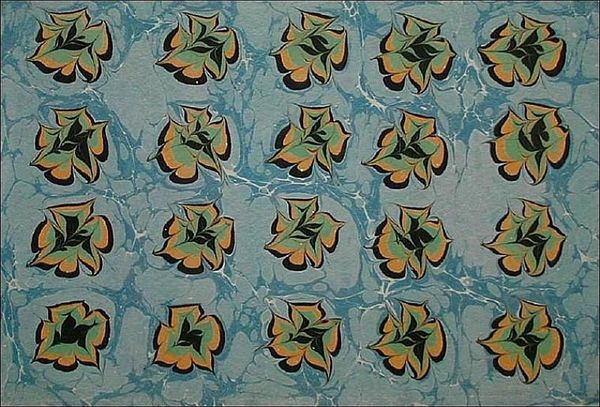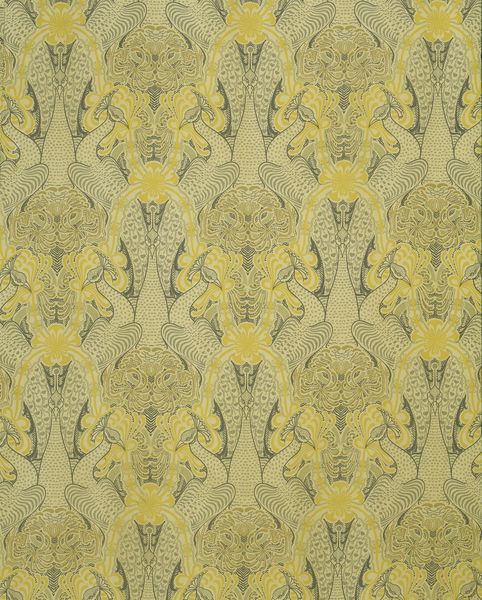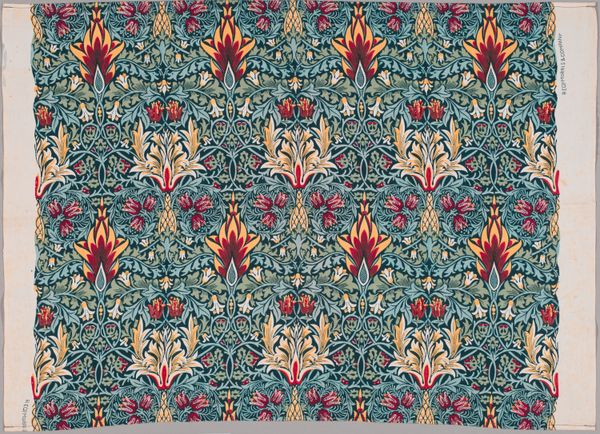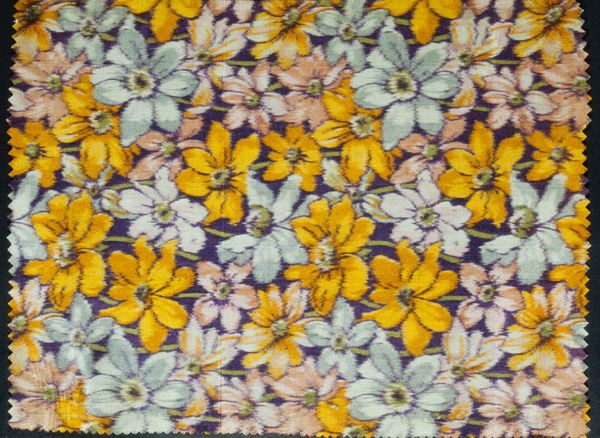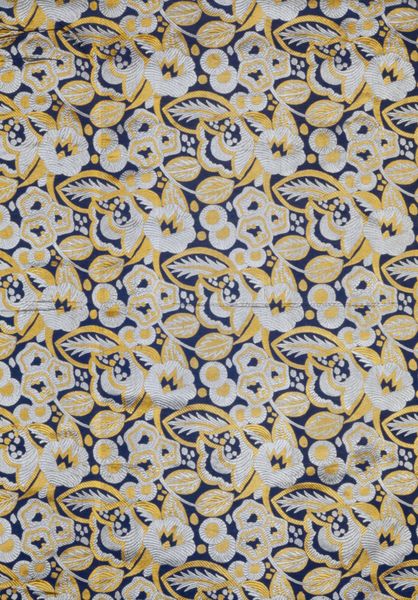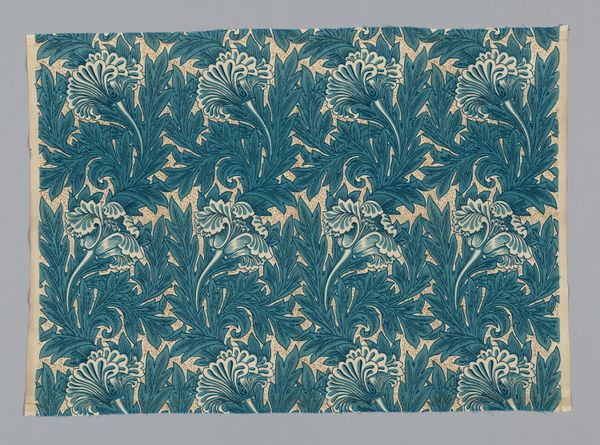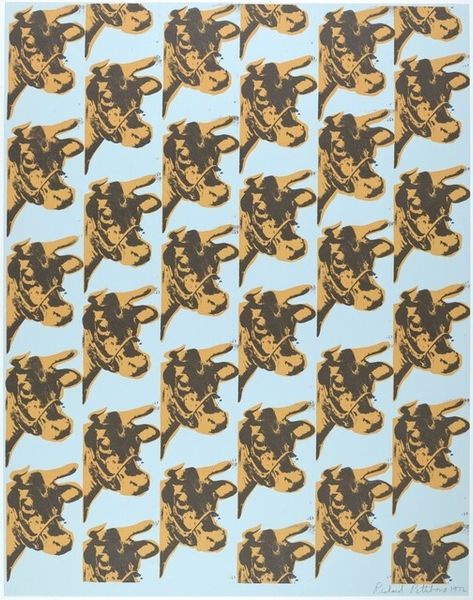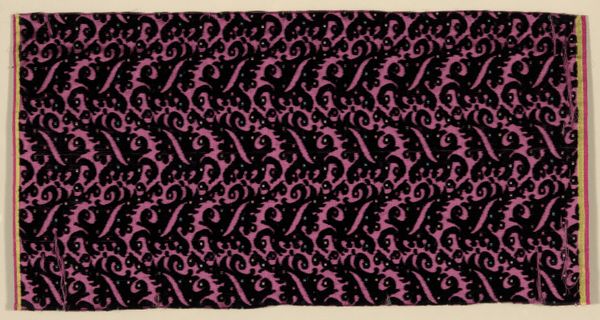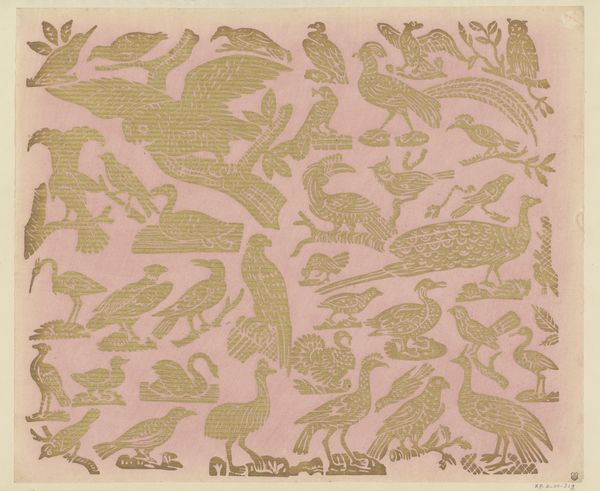
textile
#
organic
#
art-nouveau
#
arts-&-crafts-movement
#
pattern
#
textile
Copyright: Public domain
Editor: We're looking at a textile work titled "Wallpaper design" created by Otto Eckmann in 1899. The repeating floral pattern gives it an immediately calming presence, but it also feels very ordered, almost mathematical in its repetition. How do you approach a work like this? Curator: A piece like this invites a careful consideration of its formal elements. Observe the interplay between line, color, and form. The sinuous lines create movement, yes, but consider how they simultaneously confine the organic forms, creating a tension between freedom and constraint. Note how the restricted palette emphasizes the graphic quality. Editor: It's true, the lines feel both delicate and rigid. The colors too – they’re muted but somehow also…vibrant? Do you see that contradiction as intentional? Curator: Precisely! It is in this tension where the work achieves its dynamism. Observe the deliberate use of the negative space. Is it merely background, or does it play an active role in defining the shapes? Consider how the rhythm established by the repetition of forms engages the eye. We must consider the structural composition over any narrative. Editor: So you’re saying the arrangement itself, the formal structure, communicates the artist's intention? Curator: Indeed. By analyzing its formal structure, we begin to approach its very essence. In Art Nouveau, structure conveys the theme of a living environment; its colors enhance feelings. Does that become apparent upon your assessment? Editor: Yes, now I see that the visual components working together communicate a desire for beauty in industrial spaces. The color gives a natural softness that contrasts with what could easily be harsh angular patterns. It certainly makes me look at pattern and design differently. Curator: Excellent, the visual language has expanded.
Comments
No comments
Be the first to comment and join the conversation on the ultimate creative platform.

